Single Vision Lenses: A lens can be made into many prescriptions. The most common single vision lens is to correct distance. For people with presbyopia, if not wanting a bifocal they may request a near vision pair of glasses or pair to perform certain tasks such as see their computer screen only (intermediate). A prescription can be made easily into distance or near vision only. It is recommended that a patient know the distance at which they want to perform an intermediate pair for the optometrist to measure the power correctly.
Lined Bifocals: Also known as segmented multifocal lenses. This lens has two different powers in the lens. Each power is located in a distinct area of the lens bordered clearly by a visible demarcation line. The top of the lens usually has the distance correction, and through the segment it adds on power to give the near power.
Trifocal lenses: A multifocal lens that has three areas of power, each differentiated by an area of demarcation (a line). The top of the lens has the distance correction, the first line gives the intermediate power which is typically half of the add power. The second line has the entire near add power.
PAL’s: Progressive addition lenses, also known as no line multifocal lenses, are used as an alternative to a segmented multifocal lens. They have the distance power in the upper half of the lens and the lens power gradually increases as the wearer looks down and inward to view intermediate and near objects. These type of lenses make an all in one type of pair of glasses, able to see anything at any distance.
UV: UV radiation has been higher than in years past, and affects everyone over time causing cataracts, macular degeneration, pterygium, etc. There are a number of lens options to protect against UV radiation. Some have the UV filter directly in the lens material, some have a UV filter in the coating, some have it dyed-in, and other coatings include it as well. This coating is included in all eyewear sold at our EyeCare Opticals.
Scratch resistant coating: Because of the tendency of plastic lenses to scratch easier than glass, manufacturers have developed scratch resistant coatings. They increase the surface hardness to prevent scratches. This does not mean they are scratch proof, just more resistant to scratching.
Tint: Grey is the most popular for sun protection because of its evenness of transmission through the whole visible spectrum (does not change color perception – just makes it darker). Other tint colors that are available for ophthalmic lenses include brown, pink, yellow, green and blue. Tints are also available as a gradient coating, this has the darkest tint on the top of the lens and gradually lightens towards the bottom.
Anti-reflective coating (AR): A thin, clear layer applied to the surface of the lens that reduces unwanted reflections from the lens, increases the amount of light that passes through the lens to the eye and can improve night vision from a reduction in the starlike flare from lights.
Backside AR: An anti reflective coating added onto the backside of sunglass lenses to prevent glare from the sides of the lens. Recommended for any polarized lens to optimize optics.
Blue Blocking lenses: An additional lens coating that blocks the blue light produced by computer/cell phone screens or blue light from other light sources. This coating can help with eye strain from digital devices and decrease the risk of macular degeneration.
Transitions/Light Reactive lenses: A lens filter that changes its transmission of light when exposed to UV radiation. The advantages of such coating are having a pair that provides a tint when walking outside and not needing to grab a pair of sunglasses immediately.
Polarized lenses: A lens filter typically added to a sunglass frame to reduce the glare from outside sources. These filters typically come as the darkest tint colors in both grey and brown. The advantages are they decrease driving fatigue and increase driving safety by reducing glare, reduce reflections over the surface of water and have full UV protection.
Mirror Coatings: A coating applied to the front of a lens to have the same properties of a two-way mirror. Is usually used in sunglass lenses.
Polycarbonate: A softer plastic that is lighter due to a refractive index of the lens. Its softness contributes to its high-impact resistance. When safety is the primary concern, choose this lens. Safety is the concern for children, monocular individuals, or patients purchasing safety or sports eyewear.
High Index: The higher the index of refraction of a lens material, the thinner the lens edge can be made. For high myopia or hyperopia is the lens of choice because it will have both a weight and thickness advantage.
